A Beginner’s Guide to Bitcoin Paper Wallets
By: Alexander Reed | Last updated: 2/21/24
A paper wallet is a general term given to a piece of paper with a private key (or seed phrase) written on it. It’s considered to be one of the best practices for keeping your private key safe. In this post, I’ll explain how to create a paper wallet from scratch.
Don’t like to read? Watch our Video Guide Instead
Paper Wallet Guide Summary
Here’s the short way for creating a paper wallet:
- Go to BitAddress
- Generate a random private key
- Click “paper wallet”
- Choose how many copies you’d like to print out
- Encrypt the wallet with a BIP38 password (optional)
- Print and enjoy 🙂
That’s how to create a paper wallet in a nutshell. If you want a detailed explanation about the process and how to make sure it’s more secure keep on reading. Here’s what I’ll cover:
- What is a paper wallet?
- The simple (non secure) way to create a paper wallet
- The advanced (secure) way to create a paper wallet
- Keeping your paper wallet safe
- Frequently Asked Questions
- Conclusion
1. What is a Bitcoin Paper Wallet?
A private key (or seed phrase) is like the password for a Bitcoin wallet. It should be kept offline in what is known as Cold Storage. A private key is a long, confusing string of random characters, while a seed phrase is a set of 24 random words that allows you to restore your private key.
Simply put, a paper wallet is a piece of paper that has your private key written on it. This makes sure that your private key is kept offline away from the hands of hackers.
Usually this process will be done for the purpose of storing large amounts of Bitcoin. It’s considered much safer than keeping coins on a hot wallet (i.e. a wallet that is connected to the internet).
When storing your Bitcoins on a paper wallet you can only load funds to the wallet. If you want to send those funds you’ll need to import or sweep the paper wallet’s private key to a software wallet in order to get access to your coins.
Here’s an example of a paper wallet:
The Bitcoin address is written on top while the private key is written on the right side
2. The Simple Way to Create a Paper Wallet
Creating a paper wallet is pretty easy, the trick is to secure it correctly. If you just want to see the process in action and don’t care that much about security you can follow this process:
- Head over to BitAddress (an open source software for producing paper wallets).
- Move your mouse around / enter random text to help generate a random private key.
- Once done, choose “Paper Wallet” and print out the results. Your Bitcoins can then be stored through the public address on the left.
- You can also add a passphrase to encrypt the paper wallet for additional protection by ticking the BIP38 encryption box.
That’s it! The process literally takes 30 seconds and you have your own paper wallet. You can generate as many addresses as you’d like by entering the amount on ‘Addresses to generate’. The addresses will all be unique and different.
Here’s the whole process in video:
Why is this considered non secure ?
First of all, since you’re connected to the web while doing this, someone may have the ability to see what’s going on on your screen.
Second, if someone was able to hack BitAddress for example, they can collect all of the private keys that people created on the site.
Last but not least, if you’re using Windows you may have been infected with Malware which you are unaware of. This may put your private key at risk as people may be monitoring your actions.
3. The Advanced Way to Create a Paper Wallet
If you’re really serious about safeguarding your Bitcoins you have to make sure you create an ultra secure paper wallet. The process is a bit tedious but if we’re talking about a large amount of money, it’s worth the effort.
The necessary tools
This process is designed for PCs (a Mac tutorial will be coming soon but for now you can get the general idea). Here’s what you’ll need to download to your computer before getting started:
Ubuntu download (latest version) – The operating system we’ll use
LiLi download (latest version) – A software to install Ubuntu on our flash drive
BitAddress download – The software to create the paper wallet
You will also need a brand new (or completely formatted) flash drive.
Step 1 – Install Ubuntu on your flash drive
IMPORTANT: This step will erase everything you have on the flash drive.
- Open up LiLi and insert your flash drive.
- Make sure you’ve selected the correct drive (click refresh if drive isn’t showing).
- Choose “ISO/IMG/ZIP” and select the Ubuntu ISO file you’ve downloaded in the previous step.
- Make sure only “Format the key in FAT32” is selected.
- Click the lightning bolt to start the format and installation process
After the process is finished, unzip the BitAdrress file you’ve downloaded in the previous step and copy it into your flash drive.
Step 2 – Go offline and test the printer
At this point you should disconnect your computer from the Internet whether it has Wi-Fi or a LAN connection. Make sure there’s no way remote access can be granted to the computer. When finished, make sure you are still able to print a test page so you’ll know your printer is functional.
Step 3 – Run your computer using Ubuntu from your flash drive
Restart your computer. Clicking F12 or F1 during the boot-up process will allow you to choose to run your operating system from your flash drive (#6 in the image below).
After the Ubuntu operating system loads you will choose the “try Ubuntu” option.
Step 4 – Setup a printer on the Ubuntu operating system
At this point you will want to set up your printer on the Ubuntu OS:
- Click on System Settings (a monkey wrench and cog wheel icon)
- Click on “Printers”
- Click on “Add”
- Add your printer
- Print out a test page
Step 5 – Open BitAddress and print your new paper wallet
The final step will be to open the copy you have of BitAddress.org and create a paper wallet locally on your machine.
- Open private browsing in FireFox (right click -> “Open a New Private Window”)
- Type in the following in the address bar: file://cdrom/bitaddress.org-master/
- Click on the link “BitAddress.org.html”
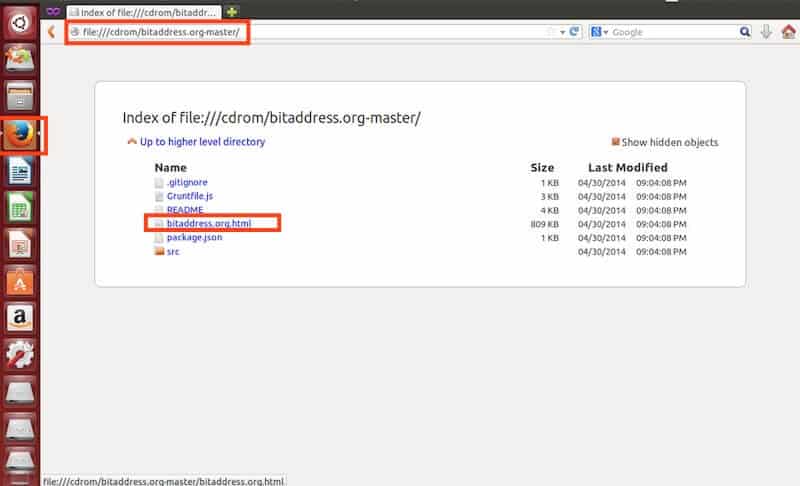
- Create your paper wallet by moving the cursor around until the number on the top right reaches 100
- Choose “Paper Wallet” from the menu
- Choose how many copies you’d like to generate
- Add BIP38 encryption (optional)
- Print out your paper wallet
Why is this process considered secure?
- You’re not connected to the Internet while producing your private key.
- You’re using an “out of the box” operating system which reduced the chance for Malware.
- You are using an offline version of BitAddress so no one can hack it.
4. Best practices for keeping your paper wallet safe
Once you have your paper wallet you can load funds to it by using the Bitcoin address on the left side. It’s important to keep the private key (on the right side) hidden and discreet.
Here are a few methods you can use to better safeguard your paper wallet:
- Get it laminated so it doesn’t tear or fade
- Keep it inside a safe or a location that only you can access
- Use a device like Cryptosteel to make it disaster proof
An advanced method includes creating several copies of the paper wallet, each holding only part of the private key or seed phrase. For example, creating three partial copies that any two of them can create the whole private key. Here’s how it should look:
This way you can leave each copy at a different location and make it harder for someone to obtain your private key if they only stole one copy.
5. Frequently Asked Questions
How Do You Import a Paper Wallet into a Software Wallet?
When the time comes and you want to send Bitcoins from your paper wallet you’ll need to import the private key or seed into a software wallet. While each wallet is different in its process the general idea remains the same:
- Download a software wallet
- Click on “New Wallet”
- Import and existing seed / private key
- Scan the QR for the private key of your paper wallet (this is much easier than typing the whole key)
Important! Do not do this process on a wallet that is already holding funds as it may override the current private key. It’s best to download a new wallet / app and import for this process.
6. Conclusion – You Need Cold Storage
If you’re serious about Bitcoin and want to store large amounts of coins you need to get some form of cold storage. If you can spare some more, I suggest using a hardware wallet, but if you can’t afford it or want to avoid it for any other reason, a paper wallet is the way to go.
My personal advice is that if you do end up using a paper wallet, take the time to go over the secure advanced method and create an ultra secure one. The extra 30 minutes or so you’ll invest in the process may end up to prove worthwhile.
Have you had any experience with paper wallets? What’s your favorite method for creating it? I’d love to hear about it in the comment section below.


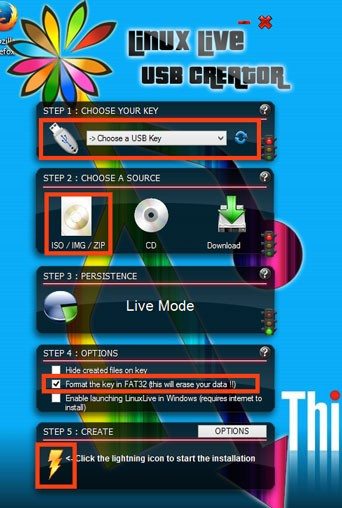
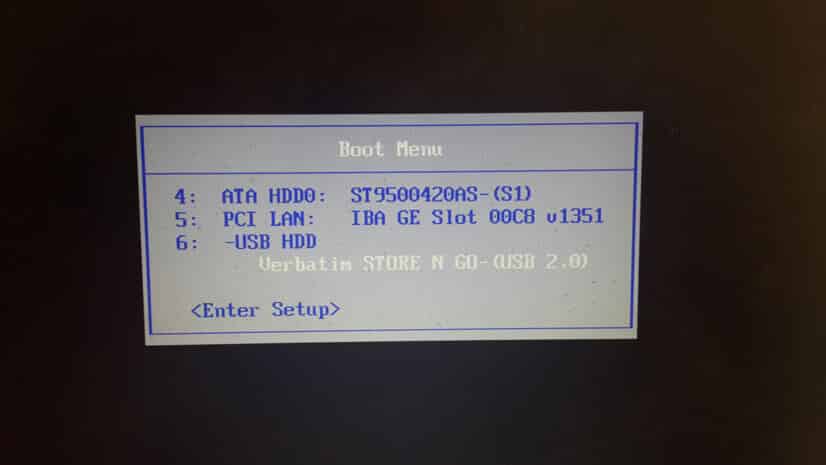
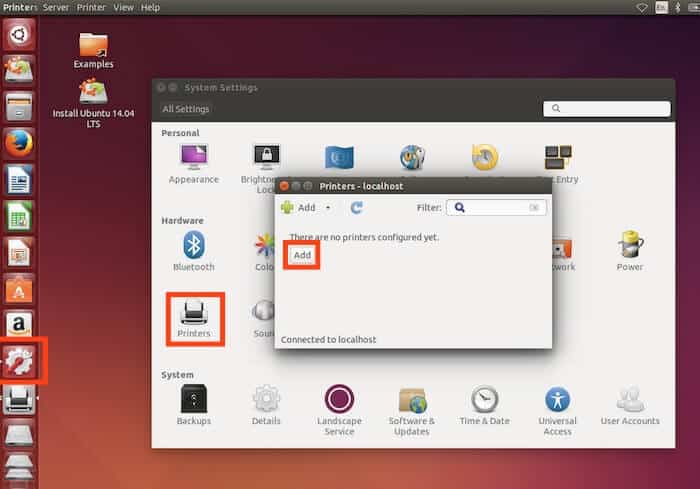

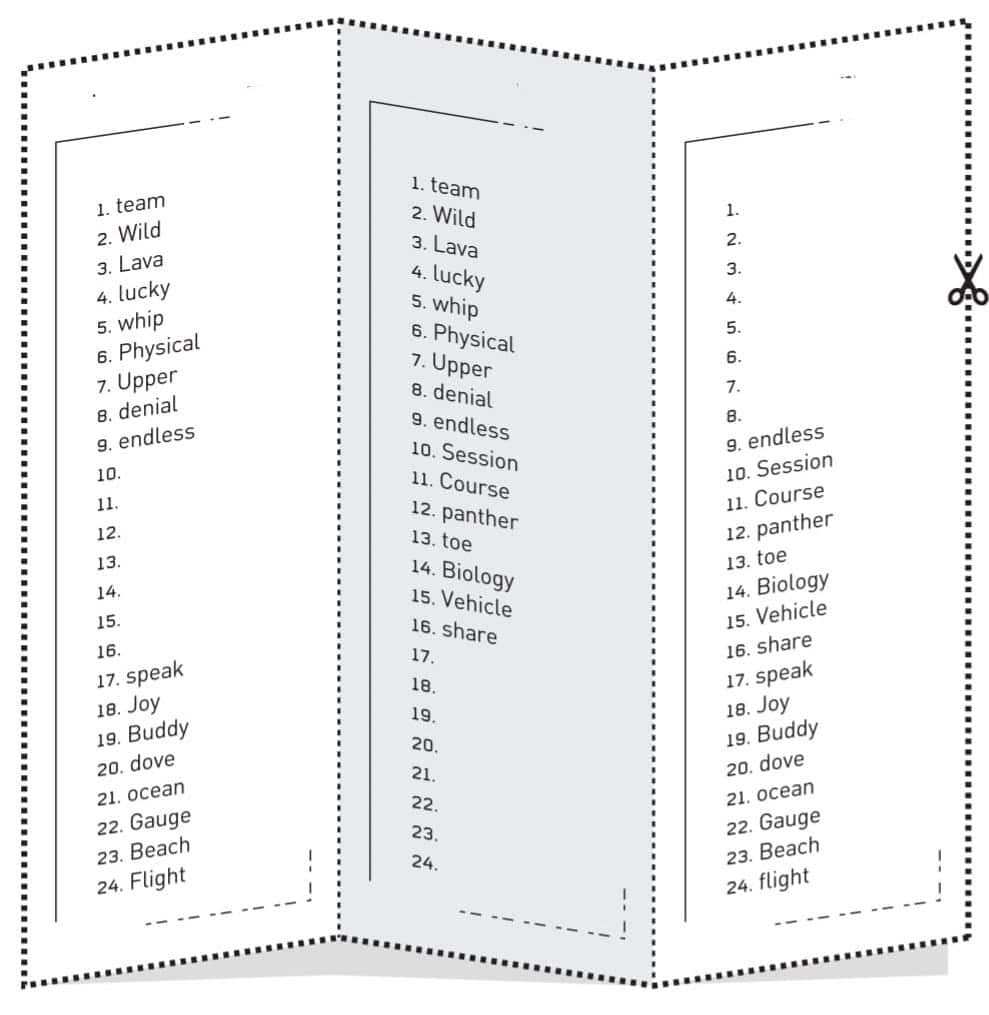


I initially invested a total of $105,000 over 5 weeks with my broker. My bonus/profit was $830,000, every attempt to make a withdrawal failed and I was instructed to make another deposit of $25,000 before I could make withdrawals which I did. Up till now, I’m still unable to make withdrawals and all attempts to contact the broker have failed. This is very pathetic and I felt so bad losing my investment. I did a due diligence test before investing with them but guess what I ended up getting burned. This is to create awareness, that not everybody can be as lucky as I was. I’m saying this because I was able to recover my funds. Thanks to BRIGADIA TECH REMIKEABLE RECOVERY SPECIALIST Anthony who is a coin recovery expert… you can contact him via mail; (brigadiatechremikeable (@) proton (.) me) or telegram( ExpertsRecoveryCom )
for more inquiries. Thought someone might find this information useful, GOOD LUCK
Losing access to a crypto wallet or getting defrauded, whether containing hard-earned cryptocurrencies or valuable NFTs, can induce stress and concern. However, there are methods to recover it, either through traditional seed phrases or alternative recovery mechanisms such as Easyreclaim0 @gmail .com. In this extensive guide, we’ll explore both avenues to ensure you’re equipped with the knowledge to regain access to your digital assets.
You “need” to import it to a paper wallet? can that be true?
I was also confused by this statement:
Important! Do not do this process on a wallet that is already holding funds as it may override the current private key. It’s best to download a new wallet / app and import for this process.
Why would i import a wallet with no funds on it?
when withdrawing funds from a paper wallet asks for a commission of 2%? is this possible or is it a scam?
Hey Volodymyr,
When withdrawing funds from a paper wallet, you shouldn’t typically encounter a commission or fee associated with the withdrawal itself.
If you’re using an online service or website to access the funds on your paper wallet, make sure it’s reputable and secure. Some online services may charge fees, but these fees are usually for their service and not associated with the paper wallet itself.
If you’re being asked for a 2% commission to withdraw funds from a paper wallet, it’s important to thoroughly investigate the source and the reason for this fee. It’s possible that it could be a scam, so exercise caution and do your due diligence to verify the legitimacy of the request.
Hi I am a 83 year old lady who barely can find her way around the internet… I invested in Bitcoin on coinbase and robinhood. So when I read that it takes to get a paper wallet it sounds impossible for me to do with no errors! How does one own bitcoin safely if they are not technical?
Hey there,
Thank you for writing in. We recommend reading up all about paper wallets here: https://99bitcoins.com/bitcoin-wallet/paper/
It is not very technical, and has a video explaining the process. I hope this helps.
I have a very stupid question, I hope though someone can enlight me bc I couldn’t find an answer by myself or online.
How is possible to create a wallet with an offline software if the blockchain is online,
how can it be recorded into the BLockchain if it happens only in my PC?
Hi again Henrii,
That’s actually a great question! When you create a wallet using offline software, the private key associated with your wallet is generated offline and never transmitted over the internet. This means that your private key is only stored on your device and is never exposed to the online world.
When you eventually want to perform a transaction and transfer cryptocurrency from your wallet to someone else’s wallet, the transaction needs to be recorded on the blockchain, which is online. This is where things get interesting.
While your private key never leaves your offline device, your public address is associated with your private key and can be shared with others. When you want to perform a transaction, you create a transaction file and sign it using your private key. The signed transaction can then be transferred to another device that is connected to the internet and broadcast to the blockchain network.
Nodes on the blockchain network will validate the transaction based on the digital signature that was created using your private key. If the transaction is valid, it will be recorded on the blockchain and become part of the public ledger. The balance of your wallet will be updated accordingly.
short answer is your wallet only exists after it gets a balance transfered to it,